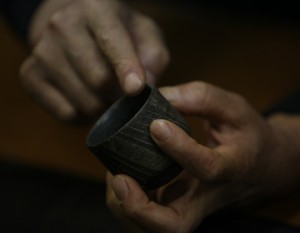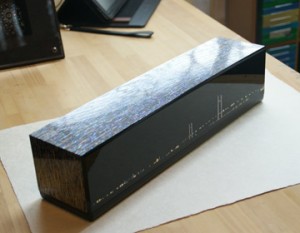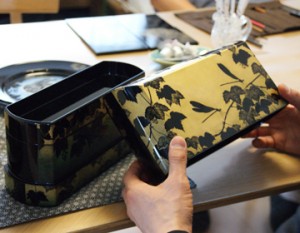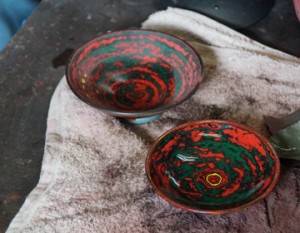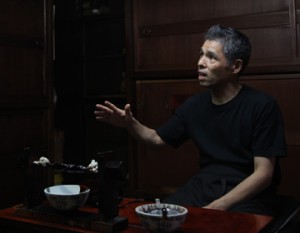“Scabbards” of various colors
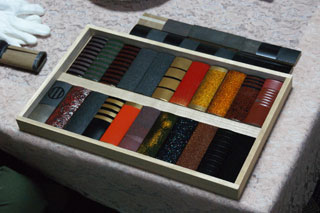
Mitsuhide Koyama is a lacquer artist who specializes in scabbards. He applies lacquer on decorative scabbards which are classified as mountings of swords.” Nakata interviews Koyama as he studies one of Koyama’s scabbard. “I usually picture only black scabbards but there is great variety here,” Nakata says as he observes them in various hues. “It was probably because there were no longer any battles in Edo era that scabbards began to be lacquered in various colors. But as you say, black and persimmon are the most popular colors for sword scabbards.”
Always use Japanese white-bark magnolia to make scabbards
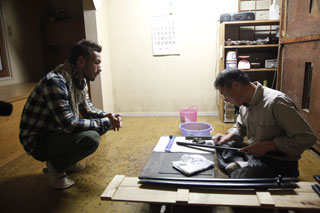
Looking at the lacquered scabbards made by Koyama, he tells Nakata that swords were not always stored in scabbards “Is that true?” Nakata cannot hide his surprise. “It is not ideal to keep the sword in the scabbard as it will rust the blade. Swords are put into the scabbard only when going out with the sword. Swords are best kept in a plain-wood scabbard called “shirasaya.” Scabbards are usually made with Japanese white-bark magnolia. Even when another kind of wood is on the exterior, using a technique called “iriko-zaya, Japanese white-bark magnolia is inserted to the interior so that it comes in direct contact with the sword. “The edge of the scabbards are delicate so water buffalo horns or metal carvings are applied. This is traditional, conventional practice.” Koyama keeps the tradition of his predecessors’ attention to detail.
Cherishing the present
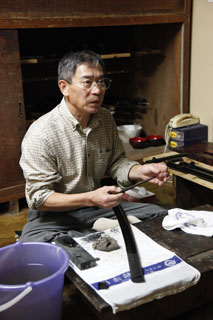
Koyama makes other lacquered pieces for traditional art crafts exhibitions or shows to continue his own artistic activity. ”I continue to produce these pieces to cherish the present. People tend to connect traditional art craft with the old.” ”I suppose we have a preconceived idea. Talking with you and seeing you work, I see that you are doing something new. We should change the preconceived image,” answers Nakata. It takes time for our work to be shown to the world. I guess that is why people picture older men working on these pieces. It does take certain amount of time to learn the technique. It also takes time to express oneself using the technique, as much as ten or even twenty years.” Koyama exchanges information with friends that are also craftsmen. He maintains traditional craftwork in lacquered scabbards and producing lacquer artwork, concurrently incorporates something new in his pieces.





